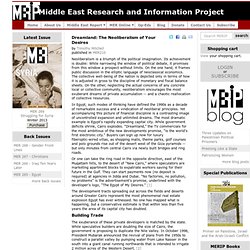

Kent hakkı -David Harvey. Harvey’in eskimeyen yazısı.

Bu kez de Taksim ve Gezi Parkı tartışmaları vesilesi ile… İnsan hakları ülkülerinin hem siyasi hem etik olarak merkezî konuma taşındığı bir çağda yaşıyoruz. Daha iyi bir dünyanın kurulması için bu ülkülerin ağırlıklarının artırılmasında pek çok enerji harcanmaktadır. Ancak çoğu kez dolaşımdaki kavramlar özünde egemen liberal ve yeni-liberal pazar mantıklarını ya da hâkim yasallık ve devlet faaliyeti biçimlerini reddetmez. Sonuçta özel mülkiyet hakkı ve kâr oranının hakla ilgili öteki tüm düşünceleri gölgede bıraktığı bir dünyada yaşıyoruz. Son yüzyıldaki kentleşmenin hayret verici hızı ve ölçeği insanî mutluluğa katkıda bulundu mu?
Insanın içinde yaşadığı dünyayı daha çok gönlüne göre yeniden yapmada en başarılı girişimidir. Ne tür bir kent istediğimiz sorusu ne tür toplumsal bağlar, doğa ile ilişki, yaşam biçimleri, teknolojiler ve güzel duyu değerleri arzuladığımız sorusundan ayrılamaz. Şimdi hızla 1940’ların Birleşik Devletleri’ne gidelim. Dreamland: The Neoliberalism of Your Desires. Neoliberalism is a triumph of the political imagination.

Its achievement is double: While narrowing the window of political debate, it promises from this window a prospect without limits. On the one hand, it frames public discussion in the elliptic language of neoclassical economics. The collective well-being of the nation is depicted only in terms of how it is adjusted in gross to the discipline of monetary and fiscal balance sheets. Dreamland (Egypt) Dreamland is a private urban development located approximately 17 km west of Egypt’s capital city, Cairo.

It covers an approximate area of 2000 acres and is situated only a few kilometers west to the Pyramids of Giza (Ghannam, 2008). It is located in the newly constructed 6 October City which is surrounded mostly by desert and arid plains, linked to the main city by a ring road and the 26 July Freeway. Gated community. In its modern form, a gated community is a form of residential community or housing estate containing strictly controlled entrances for pedestrians, bicycles, and automobiles, and often characterized by a closed perimeter of walls and fences.

Gated communities usually consist of small residential streets and include various shared amenities. For smaller communities this may be only a park or other common area. For larger communities, it may be possible for residents to stay within the community for most daily activities. Gentrification. Gentrification is a shift in an urban community toward wealthier residents and/or businesses and increasing property values.[1] Gentrification is typically the result of investment in a community by local government, community activists, or business groups, and can often spur economic development, attract business, and lower crime rates.

In addition to these potential benefits, gentrification can lead to population migration, which involves poorer residents being displaced by wealthier newcomers. In a community undergoing gentrification, the average income increases and average family size decreases. Poorer pre-gentrification residents who are unable to pay increased rents or property taxes[dubious ] may be driven out. Often old industrial buildings are converted to residences and shops. Origin and etymology[edit] Gentrification is a multi-faceted phenomenon that can be defined in different ways.[5] Chapter 6-Hoover and Giarratani. In Chapter 4, competition for scarce local inputs was identified as one of the factors limiting spatial concentration and favoring the dispersal of activities.

We are now ready to see how this works. The present chapter deals with the dispersive effects of competition for land, which first and foremost denotes space. Every human activity requires some elbowroom. Residential segregation. Residential segregation is the physical separation of two or more groups into different neighborhoods,[1] or a form of segregation that "sorts population groups into various neighborhood contexts and shapes the living environment at the neighborhood level.

"[2] While it has traditionally been associated with racial segregation, it generally refers to any kind of sorting based on some criteria populations (e.g. race, ethnicity, income).[3] While overt segregation is illegal in the United States, housing patterns show significant and persistent segregation for certain races and income groups.
Five Faces Of Oppression. Iris Young.

Five Faces Of Oppression. Oppression, Privilege, & Resistance. McGraw-Hill, 2004. Pg. 37-63. Five Faces of Oppression. Author: Iris YoungTitle of Article: Five Faces of OppressionText Source: Oppression, Privilege, and ResistanceYear Published: 2004Pages: 37-63 Summary: Iris Young's article is about the systematic reproduction of structural oppression through the ways society defines groups.

She argues that oppression is not always a case of one group oppressing another but has now come to include the exercise of power by society over certain groups unintentionally. She uses five categories to describe oppression on any group: exploitation, marginalization, powerlessness, cultural imperialism, and violence. Main Arguments: Young argues that, through exploitation, a society that defines everyone as formally free still maintains a hierarchical system. Devaluing one groups labor in order for another group to realize a profit on a distributed product systematically transfers power from the first group to the latter.
How do you position yourself to the issues raised in the article? Jane Jacobs on Import Replacement - Hyde Park Urbanist. Lately, Jack Spicer's been carrying around a copy of Jane Jacobs's The Economy of Cities , as if it were the Bible. Years ago, I'd read her deservedly acclaimed The Life and Death of Great American Cities and when Jack mentioned that she'd used the concept of “import substitution”, which I talked about here , I figured I ought to take a look at Spicer's bible. Urban agglomeration. The Greater Tokyo Area, the world's largest urban agglomeration, with 38.4 million people.

In the study of human settlements, an urban agglomeration is an extended city or town area comprising the built-up area of a central place (usually a municipality) and any suburbs linked by continuous urban area. INSEE, the French Statistical Institute, uses the term unité urbaine, which means continuous urbanized area. However, because of differences in definitions of what does and does not constitute an "agglomeration", as well as variations and limitations in statistical or geographical methodology, it can be problematic to compare different agglomerations around the world.
It may not be clear, for instance, whether an area should be considered to be a satellite and part of an agglomeration, or a distinct entity in itself. Largest occurrences[edit] The 25 largest agglomerations by population in March 2013, according to Demographia:[1] See also[edit] External links[edit] References[edit] Urban economics. Urban economics is broadly the economic study of urban areas; as such, it involves using the tools of economics to analyze urban issues such as crime, education, public transit, housing, and local government finance.
More narrowly, it is a branch of microeconomics that studies urban spatial structure and the location of households and firms (Quigley 2008). Since its formulation in 1964, Alonso's monocentric city model of a disc-shaped Central Business District (CBD) and surrounding residential region has served as a starting point for urban economic analysis. Monocentricity has weakened over time because of changes in technology, particularly, faster and cheaper transportation (which makes it possible for commuters to live farther from their jobs in the CBD) and communications (which allow back-office operations to move out of the CBD). Additionally, recent research has sought to explain the polycentricity described in Joel Garreau's Edge City. Introduction[edit] Economies of agglomeration. The term economies of agglomeration is used in urban economics to describe the benefits that firms obtain by locating near each other ('agglomerating').
This concept relates to the idea of economies of scale and network effects. Simply put, as more firms in related fields of business cluster together, their costs of production may decline significantly (firms have competing multiple suppliers, greater specialization and division of labor result). Even when competing firms in the same sector cluster, there may be advantages because the cluster attracts more suppliers and customers than a single firm could achieve alone. Cities form and grow to exploit economies of agglomeration. The term 'diseconomies of agglomeration' refers to the opposite case. Agglomeration economies are closely associated with economies of scale and the network effects mentioned above.
Advantages[edit] Economic geography. Economic geography is the study of the location, distribution and spatial organization of economic activities across the world. Economic View - Why Free Parking Comes at a Price. The economics of free parking. Here is my latest NYT column, for the ideas I am indebted to pointers from Daniel Klein, Matt Yglesias, and of course Donald Shoup. Here is the bottom line: If developers were allowed to face directly the high land costs of providing so much parking, the number of spaces would be a result of a careful economic calculation rather than a matter of satisfying a legal requirement. Parking would be scarcer, and more likely to have a price – or a higher one than it does now – and people would be more careful about when and where they drove. The subsidies are largely invisible to drivers who park their cars – and thus free or cheap parking spaces feel like natural outcomes of the market, or perhaps even an entitlement.
Yet the law is allocating this land rather than letting market prices adjudicate whether we need more parking, and whether that parking should be free. Here are a few quotations from the article: Retributive justice. Retributive justice is a theory of justice that considers punishment, if proportionate, to be the best response to crime. When an offender breaks the law, justice requires that they forfeit something in return. Retribution should be distinguished from vengeance. Unlike revenge, retribution is directed only at wrongs, has inherent limits, is not personal, involves no pleasure at the suffering of others, and employs procedural standards.[1][better source needed] In ethics and law, "Let the punishment fit the crime" is a principle aphorism that means the severity of penalty for a misdeed or wrongdoing should be reasonable and proportionate to the severity of the infraction.[2] The concept is common to most cultures throughout the world and is evident in many ancient texts.
Traditionally, philosophers of punishment have contrasted retributivism with utilitarianism. Distributive justice. Often contrasted with just process, which is concerned with the administration of law, distributive justice concentrates on outcomes. This subject has been given considerable attention in philosophy and the social sciences. Spatial justice. Spatial justice links together social justice and space. Henri Lefebvre. And do you know what "the world" is to me? Shall I show it to you in my mirror? Urban planning. Social space. A social space is physical or virtual space such as a social center, online social media, or other gathering place where people gather and interact. Some social spaces such as town squares or parks are public places; others such as pubs, websites. or shopping malls are privately owned and regulated.[1] Spatialization. Spatialization (spatialisation) can refer to the spatial forms that social activities and material things, phenomena or processes take on.[1] This term related to geography, sociology, urban planning and cultural studies.
Henri Lefebvre. Space. Urbanization. Global urbanization map showing the percentage of urbanization per country. Parking economics. Parking. Zoning. Faces of Oppression.